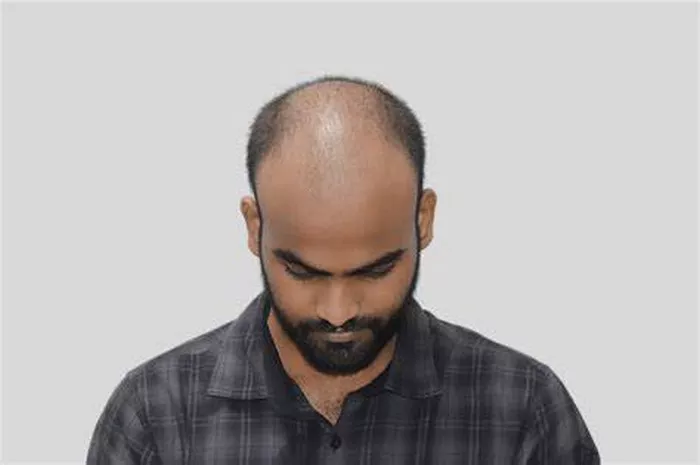Hair loss can be a distressing experience, impacting self-esteem and confidence. Various hair restoration techniques have emerged over the years, with QHT (Quick Hair Transplant) being one of the latest innovations. This article explores what QHT hair transplant is, how it works, its benefits, and what to consider before undergoing the procedure.
Introduction to Hair Transplants
Hair transplant procedures have evolved significantly over the decades. Traditional methods like FUT (Follicular Unit Transplantation) and the more recent FUE (Follicular Unit Extraction) have paved the way for advanced techniques such as QHT. Understanding the basics of hair transplantation helps contextualize the advancements and benefits of QHT.
Traditional Hair Transplant Methods
1. FUT (Follicular Unit Transplantation):
- Involves removing a strip of scalp from the donor area.
- The strip is dissected into individual follicular units and transplanted to the balding area.
- Leaves a linear scar and requires a longer recovery time.
2. FUE (Follicular Unit Extraction):
- Involves extracting individual hair follicles from the donor area.
- Less invasive than FUT, with minimal scarring.
- Shorter recovery time and less postoperative discomfort.
What is QHT Hair Transplant?
Quick Hair Transplant (QHT) is a cutting-edge hair restoration technique that aims to combine the efficiency of FUE with enhanced precision and speed. QHT is designed to minimize trauma to the scalp and reduce recovery time, providing a more comfortable and effective solution for hair loss.
See Also: What is Follicular Unit Transplantation?
How QHT Works
1. Advanced Extraction Techniques:
- QHT utilizes state-of-the-art extraction tools to harvest hair follicles with minimal trauma.
- The procedure is quicker than traditional FUE, reducing the time the follicles are outside the body and enhancing their survival rate.
2. Immediate Implantation:
- One of the key features of QHT is the immediate implantation of extracted follicles.
- This minimizes the time follicles spend outside the body, reducing the risk of damage and increasing the likelihood of successful grafting.
3. Enhanced Precision:
- QHT employs advanced imaging and mapping technologies to ensure precise placement of hair follicles.
- The procedure is tailored to the individual’s hair growth pattern, ensuring natural-looking results.
Benefits of QHT Hair Transplant
1. Minimized Trauma:
- The advanced extraction and immediate implantation techniques of QHT result in less trauma to the scalp.
- This leads to reduced postoperative pain and a quicker recovery time.
2. Higher Graft Survival Rate:
- By minimizing the time hair follicles spend outside the body, QHT increases the survival rate of transplanted grafts.
- This results in fuller, more natural-looking hair growth.
3. Natural-Looking Results:
- The precision and customization of QHT ensure that the transplanted hair mimics the natural growth pattern.
- Patients achieve a seamless and natural appearance.
4. Reduced Downtime:
- The minimally invasive nature of QHT means that patients can return to their normal activities sooner.
- There is less swelling and discomfort compared to traditional methods.
The QHT Procedure: Step-by-Step
1. Consultation and Assessment:
- The process begins with a thorough consultation with a hair transplant specialist.
- The patient’s hair loss pattern, donor area, and overall health are assessed to determine suitability for QHT.
2. Preparation:
- The donor and recipient areas are prepared.
- Local anesthesia is administered to ensure the patient’s comfort during the procedure.
3. Follicle Extraction:
- Using advanced tools, individual hair follicles are extracted from the donor area.
- The process is quick and precise, minimizing trauma to the follicles.
4. Immediate Implantation:
- Extracted follicles are immediately implanted into the recipient area.
- The placement is meticulously planned to match the natural growth pattern.
5. Postoperative Care:
- Patients receive detailed instructions for postoperative care.
- Follow-up appointments are scheduled to monitor the progress and ensure optimal results.
Considerations Before Undergoing QHT
1. Eligibility:
- Not everyone is a suitable candidate for QHT.
- Factors such as the extent of hair loss, the quality of the donor area, and overall health play a crucial role in determining eligibility.
2. Choosing a Qualified Surgeon:
- The success of a QHT procedure largely depends on the skill and experience of the surgeon.
- It’s essential to choose a board-certified specialist with a proven track record in hair restoration.
3. Understanding the Costs:
- QHT can be more expensive than traditional hair transplant methods due to its advanced technology and precision.
- Patients should consider the long-term benefits and potential cost savings from a successful transplant.
4. Realistic Expectations:
- While QHT offers excellent results, it’s important for patients to have realistic expectations.
- Hair growth takes time, and the full results may not be visible for several months.
Post-Procedure Care
1. Immediate Aftercare:
- Patients may experience mild swelling and discomfort in the first few days.
- It’s crucial to follow the surgeon’s aftercare instructions to ensure proper healing.
2. Long-Term Care:
- Proper hair care and maintenance are essential for the longevity of the transplanted hair.
- Regular check-ups with the specialist help monitor progress and address any concerns.
Conclusion
QHT hair transplant represents a significant advancement in hair restoration techniques, offering a quicker, more precise, and less invasive solution for hair loss. With its minimized trauma, higher graft survival rate, and natural-looking results, QHT provides an excellent option for individuals seeking to restore their hair and confidence. As with any medical procedure, it’s essential to consult with a qualified specialist to determine the best approach for individual needs and ensure the highest chances of success.


